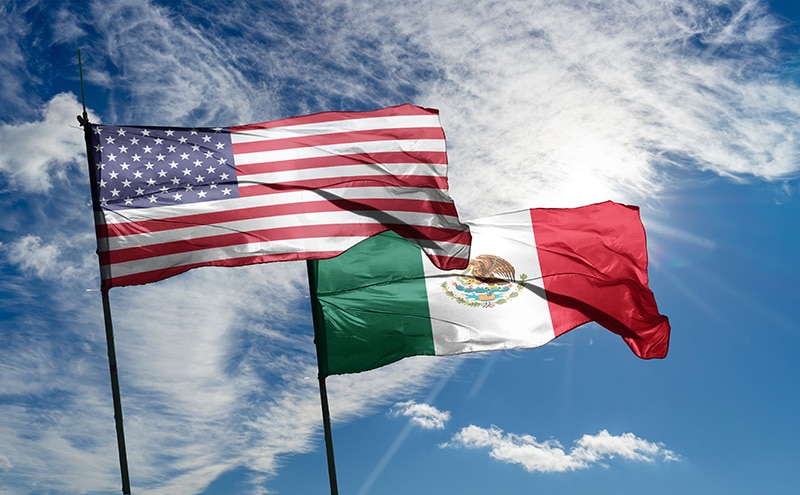
Air transport will remain necessary for expedited delivery
Todo sobre los casinos móviles: juegue sus juegos favoritos mientras viaja – Nine Casino en España!

Air transport will remain necessary for expedited delivery
Yael Katzwer, Deputy Editor | Air Cargo Next
October 2, 2023
As more producers turn to nearshoring to reduce costs and add resilience to their supply chain, Mexico is reaping the benefits of moving goods production closer to customers in North America. “Nearshoring has the potential to boost the growth of Mexican manufacturing exports to the U.S., from $455 billion today to an estimated $609 billion in the next five years,” according to a June research paper by investment banking firm Morgan Stanley. “Manufacturing exports currently represent about 40% of Mexico’s $1.3 trillion economy. “New investment driven by nearshoring could reach about $46 billion in the next five years, helping boost Mexico’s annual [gross domestic product] growth to around 3% in 2025 to 2027, from an estimated 1.9% in 2022,” the report stated. “Recent investments announcements, including a decision by the leading U.S. electric car maker to open a $5 billion plant in Monterrey, highlight the growing nearshoring trend.”
Air Cargo Next recently chatted with two executives from Tampa, Fla.-based third-party logistics firm BlueGrace Logistics, which is in the process of opening an office in Mexico in response to nearshoring growth in the country. The company’s nine other offices are in the United States.
Jose Fernandez, vice president and country manager for Mexico, and Mark Derks, chief marketing officer, shared insights on why nearshoring is a growing practice, as well as its benefits and the role air cargo will continue to play as production is moved to Mexico. What follows is an edited version of the conversation.
Air Cargo Next: Why are we seeing this current increase in nearshoring?
Jose Fernandez: It’s definitely the pandemic. It’s the aftermath of the pandemic, plain and simple.
Nearshoring in Mexico has been a real concept and a very relevant concept for the country for many decades now, ever since the NAFTA agreement was established in the early ’90s. Then, for a couple of decades, East Asia, mainly China, took over and presented lower costs … for many of the manufacturing companies. And some of them that had established themselves in Mexico maybe decided to leave Mexico for a bit and go to East Asia … even though it took them much longer to receive the materials, the finished products, etc. At the end, the total cost at that time made sense for them to do so.
But now, basically, the pandemic showed them that, if you do that, if you establish pretty much all of your resources and your networks far away from the U.S., you could have your supply chains being pretty much paralyzed and stuck if something were to happen, like what happened over the last couple of years. Companies have understood now that not everything is the lowest cost available, but it’s also trying to establish a solution that would not be stopped for any other extraordinary concepts or phenomena, like the pandemic. Maybe they were saving some money throughout those couple of decades, but then having your supply chain being completely paralyzed … would basically defeat the purpose of that.
So, some companies now are saying, “We will just go to Mexico completely.” Some other companies are saying, “Let’s keep something in Asia or the Far East, but let’s bring at least a portion of what we have to Mexico, so that we can at least have some flexibility, some different solutions and different paths that we can take, depending on what could happen in the future.”
Air Cargo Next: What other benefits does nearshoring bring? Are there obstacles?
JF: The No. 1 benefit, I would definitely say, is the flexibility and the scalability that you can have. It’s much faster to have something done and to control something if it’s closer to you . … It’s much easier for someone in the U.S. to come to Mexico and visit a few different Mexican locations than it is for them to go all the way to China. It’s the same, or almost the same, time zone for the most part, so that also facilitates the conversation, the communication, between all parties.
Some of the obstacles – I mean, I wouldn’t necessarily call them obstacles – but you do need to deal with another country’s government. You need to go to Mexico. You need to follow that government’s rules. You need to speak their language. You need to have someone that can guide you and can help you basically go through each one of those steps so that you can be completely sure that you’re doing everything the way you’re supposed to. Because most of these companies, their first step will be to build some sort of factory, some sort of distribution center in Mexico that would bring their supply chain closer to the U.S. So you’d need to know someone locally that understands what that entails, from a permit point of view, from a contractor point of view, from cost projection, etc.
Air Cargo Next: How does nearshoring affect the shipping portion of the supply chain?
JF: First of all, you can have most of your freight, if not all, shipped over the road either by trailer or by train rather than by ocean or air. If you compare it to ocean, it’s obviously much faster transit time. It could be a little more expensive on a piece-by-piece comparison, but [you increase your] savings by getting your freight much sooner than before.
In comparison to air cargo, then you would have the opposite scenario: It would take probably a little less time if you ship it by air, [but] that could be very, very expensive. If you compare it to what you can do over the road, when shipping something from Mexico to the U.S., especially if you deal with large volumes, then the cost per item would go down tremendously.
Mark Derks: [Moving operations to Mexico] probably will add to some further demand for air cargo out of Mexico. And that could be MexicoU.S., it could be Mexico-Canada, it could be Mexico-Asia, Mexico-Europe. But in terms of nearshoring, for U.S. purposes, you probably will see some increase in demand for [air transport].
It will just also offer an alternative for those shippers to be able to move [freight] on the ground if an expedited cargo move might not be there or if that ground transport was an option that might also be economically more in favor of that shipper versus a pricier cargo movement.
JF: Absolutely. Expedited air cargo will still [be an] option as a means to get to the U.S. if for some reason an over-the-road solution will not get there on time. We see that happen more commonly in the automotive industry, since they’re always working in the just-in-time time supply chain, where they pretty much have no inventory surrounding their assembly plants in the U.S. Pretty much everything is being produced in Mexico and shipped right after it comes out of the production line. It’s basically a nonstop operation. But sometimes things happen, right? And that assembly plant cannot stop just because a couple of pallets didn’t get to that location on time . … Those shippers would definitely still continue to use air cargo for expedited [delivery].
Get expert logistics insights delivered straight to your inbox
"*" indicates required fields